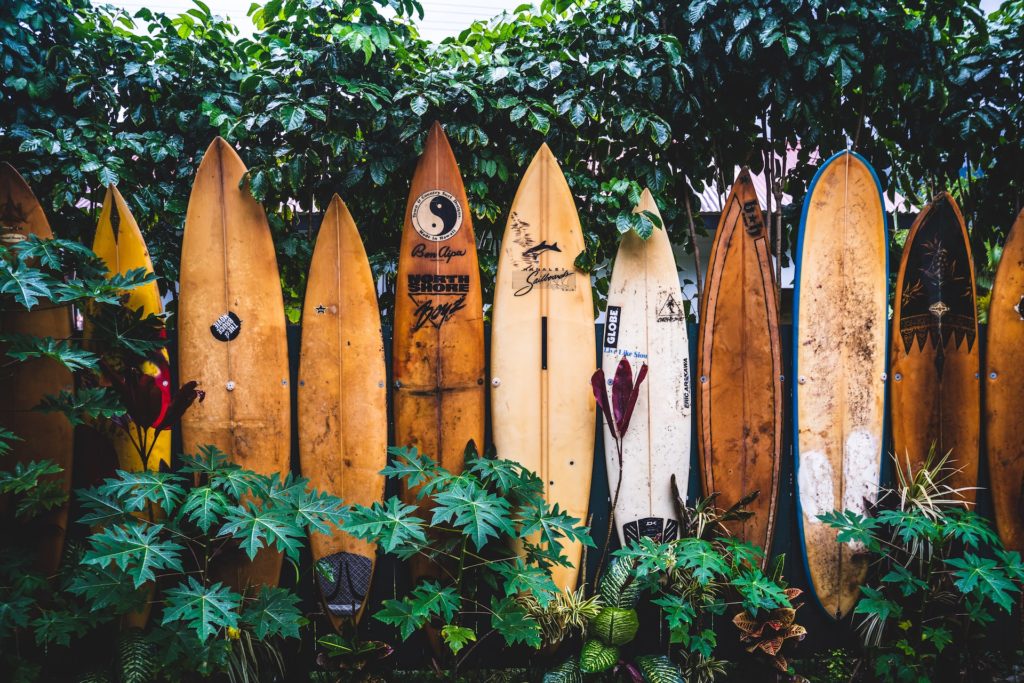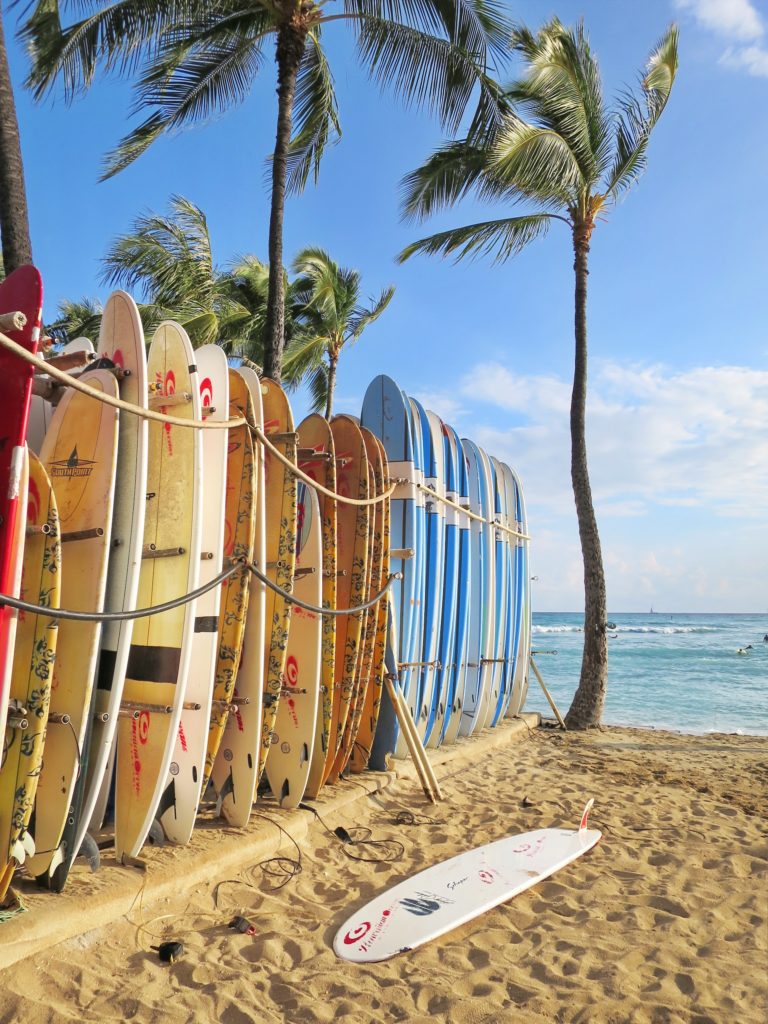It doesn’t matter if you are a beginner, an intermediate, or even an advanced surfer – learning how to choose the right surfboard that is right for your abilities and the surf conditions is critical to your success and enjoyment of surfing.
The intermediate to expert surfer is generally going to have a good idea about which board they want to take out in certain wave types, but this knowledge takes time and not everyone knows what equipment they need.
There isn’t any one surfboard that is completely perfect for one person in every kind of wave and conditions. You’re going to have to build a quiver of boards of various shapes, styles and sizes if you’re going to be surfing on a regular basis.

You’ll find that no matter what level of surfing you are at, you’re going to want to start building that dream quiver. Even beginners after a few surfs will want to refine and update their board dimensions to avoid surfing the wrong board.
There are a number of factors that will need consideration when you’re choosing the right surfboard on any given day:
Skill Level – Are you a beginner, intermediate or advanced surfer?
Fitness Level – Even when you reach higher levels of surfing, fitness levels are going to play a role in what kind of board you’re going to surf depending on the conditions.
Height and weight – This will help to determine how much volume you would need for a particular style of board.
Wave Type – What type of waves are you going to be surfing? Hollow and fast – soft, slow crumbly?
These are all essential factors to consider and can directly impact your surfing performance.

As mentioned above, a surfer who’s just starting out may only need one good beginner surfboard to get them to a level where they start to progress.
The new surfer will want a board that has plenty of volume and stability. This surfboard will be something around the 7-8 foot mark and about 22-23 inches wide and 3 inches thick for most people.
A board around this size will provide plenty of volume to ensure they can paddle into waves. A soft-top surfboard is a good option for beginners as they provide lots of float and stability while being safer in the lineup.
The added width and thickness combined with the general outline on these boards (wider, rounder nose, and wider tail) provide plenty of stability when trying to stand up on the wave.
After you get the fundamentals sorted, you can start to look into polyester and epoxy surfboards and begin to refine your preferred surfboard shape to suit your abilities and your favored wave types. As time goes on, you’ll obviously seek more progression and performance out of your shape.
To learn more about the different materials, check out our article on “Surfboard Construction Types”. Once you’ve identified your preferred material, you then need to address the question, “What Size Surfboard Should I Buy?” based on your increased skill level.
Last but not least, learn about other surfboard intricacies, such as different surfboard outlines or the surfboard bottom contours, and how they affect varying aspects of surfing performance. Put all of these puzzle pieces together to create the final image of your ideal surfboard by using this knowledge of equipment.